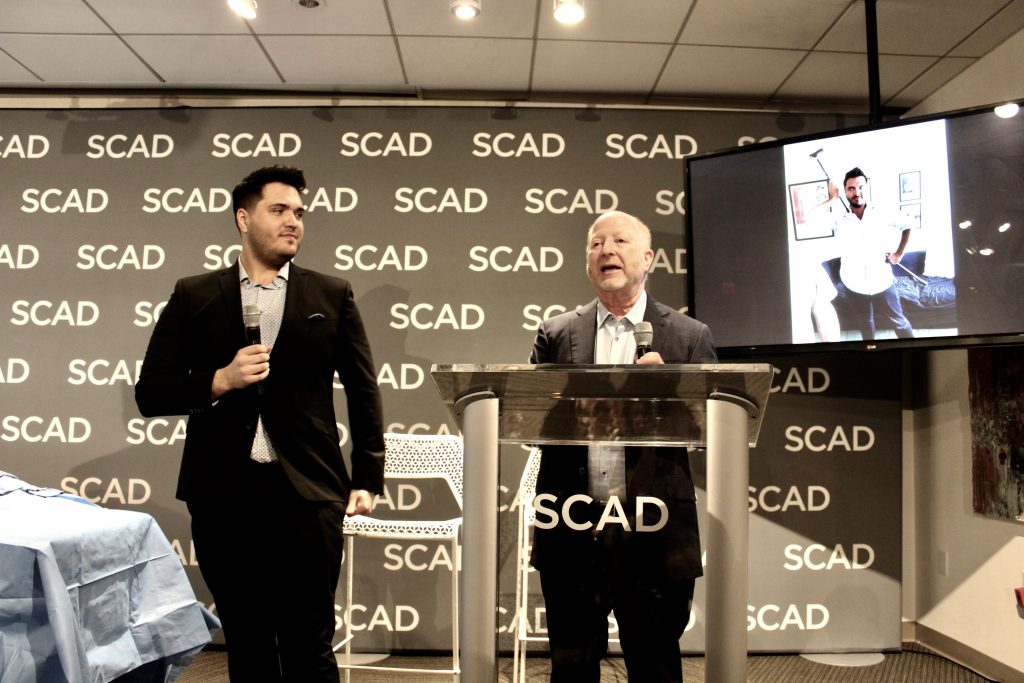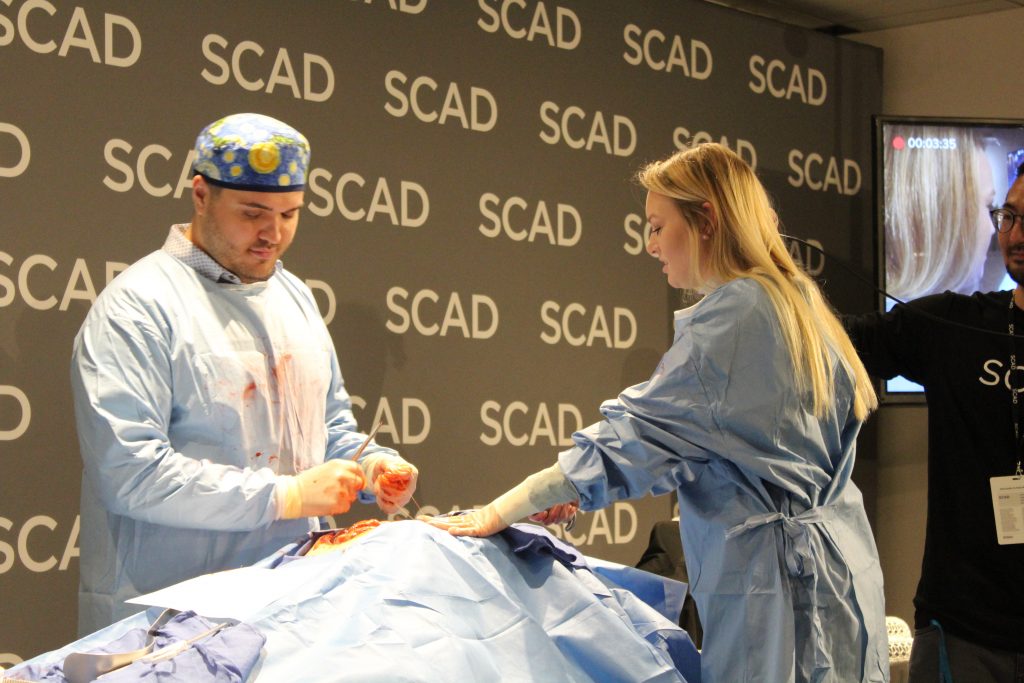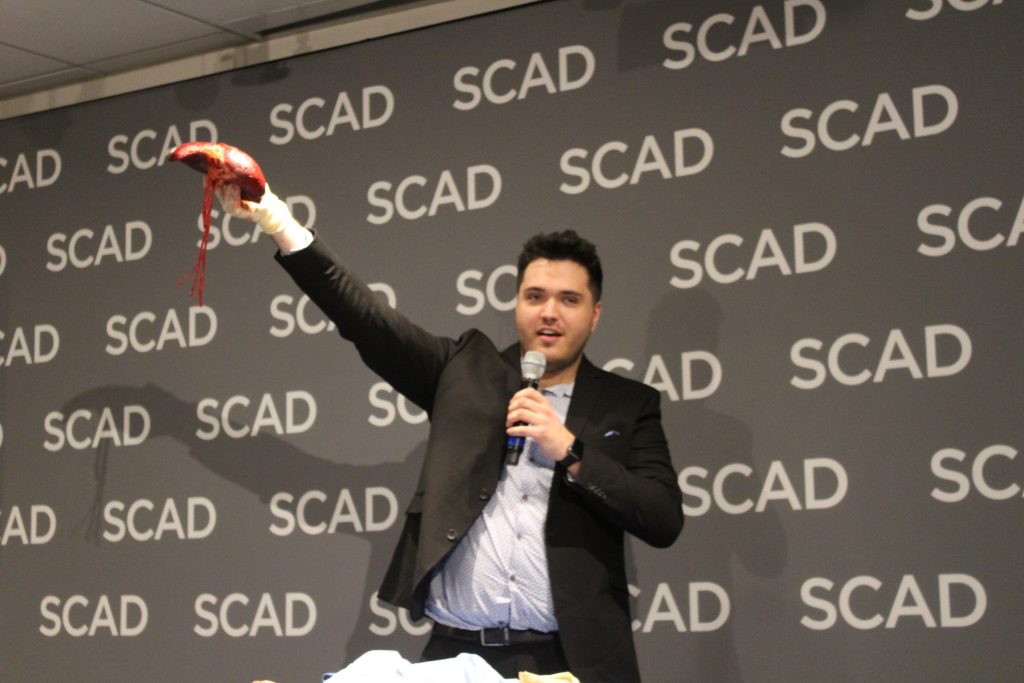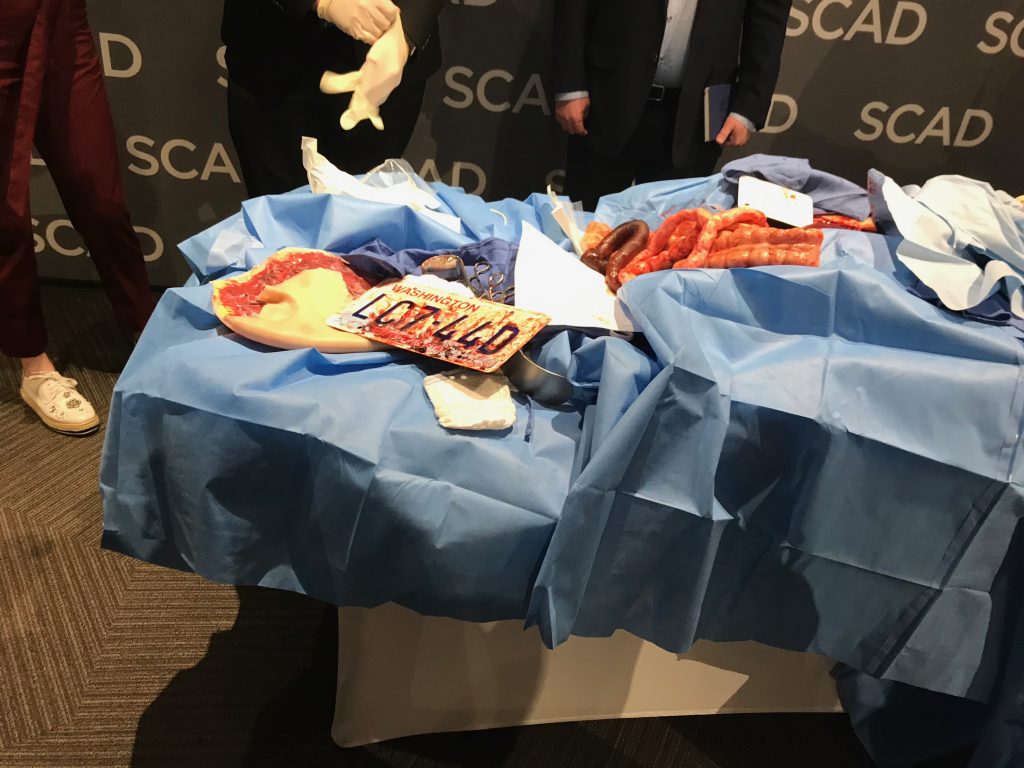Witness a gory surprise from the aTVfest panel ‘The Science of ‘Grey’s Anatomy’ Storytelling’

One of the first panels of this year’s SCAD aTVfest will forever be one of the most memorable — and likely never to reoccur. The panel, “The Science of ‘Grey’s Anatomy’ Storytelling,” did more than take audience members behind the scenes and into the process of creating and developing stories. The panelists surprised everyone with a thrilling and gory close-up look.
Chris Howard, a dramatic writing professor from the Savannah location introduced the panelists, executive producer Fred Einesman and medical adviser Michael Metzner. Both explained their roles on the show and how they contribute to creating the magic we see on screen.
In the writers’ room, a pitch begins with a medical journal, a news article or a crazy story that happened to the sister of a neighbor’s cousin. However, since the show’s main goal in storytelling is to only write what is true, Einesman helps source at least four to five outside consultants to review every script and insane story. Hollywood Health & Society puts the writers in touch with some of the best doctors in the world.
Even if a story gets approved as a one-in-a-million case, the show still needs to recreate it. This is when Metzner — a third-year general surgery resident with a background in art, film and TV — steps in as the medical adviser for the show. “I should warn that this is very gruesome,” Metzner said. He showed a clip from season 15, episode 5, “Everyday Angel.” His goal is not only to accurately represent the surgery or trauma on screen, but to have a connection to the written story. Once a medical theme is decided, Metzner creates a 3D rendering of the injury. He creates diagrams of what he wants to see as they progress through the show and surgery — specifically the visuals of the prosthetics. Then, they do a live scan of the actor’s body to create an exact prosthetic. “I think I have the best job in the world,” Metzner said.

The true gem of the panel was the surprise live showcase of how the prostics work with actual actors during the film process. Two students volunteered (but really, they previously signed waivers), and one was cast as the patient and the other as the resident. Metzner and the resident student gloved and gowned up as any surgeon would. The patient laid down on the table and covered up, with the exception of his stomach. This is when the magic happens. The stomach the audience saw was actually a prosthetic. However, it looked so real that there were some worried gasps when Metzner drew a very real scalpel across the student’s abdomen and blood rimmed at the edge of the skin. As he was making the cut, Metzner jokingly said, “You won’t feel a thing, I promise.”

A live GoPro allowed the audience to get a close look at the realistic surgical scene. To speed up the process, Metzner went ahead and pulled the cut apart, removing some organs along the way. He explained, as he pulled out a liver and intestines, that they were all made of silicone. As if the scenario couldn’t get more bizarre, Metzner grabbed the resident student’s hand and helped her dig in through the abdomen until they both pulled out a license plate. For hardcore fans of the show, Snow Patrol’s song “Chasing Cars” played throughout the surgery.
Luckily, the surgery went smoothly — besides the license plate — and the patient had a quick recovery. “I thought there was a lot of great information on how to develop a drama with realistic scenarios,” said Logan Hughes, a fourth-year writing student.

The goal for Metzler, Einesman and the entire production team is to show medical traumas in a realistic light, enabling viewers to empathize with medical cases. “We have a responsibility to educate. At the end of the show, you’ve learned something,” Einesman said. “Film school and what I’m doing now made me a better doctor.”






















